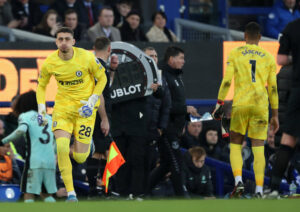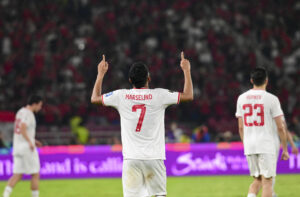There is no bigger game in the African football calendar than the Zamalek and Ahly fixture, locally referred to as El Qimah, or ‘The Top’ – collectively, the two Egyptian sides make up the rivalry known as the Cairo Derby.
The game is annually the biggest grudge match in Egypt, the Middle East and all of Africa. It’s Africa’s answer to the SuperClasico in South America, and El Clasico in Spain.
The Fiercest Rivalry in Africa
Cairo Derby is the Greatest Rivalry in Africa
The Cairo Derby in Egypt, Africa is a game not shy of controversy. In Egypt, if an announcer ends up saying Zamalek or Ahly’s name first, they end up being accused of favouritism. Egyptian commentators simply refer to the game as Mubarat El Qimah – ‘The top match.’ This rivalry is intense, and in it’s more than 100 years of history it has led to violence, riots, and even divorce.
The rivalry began not as a footballing rivalry, but as a political and social one. The beginnings of these two clubs couldn’t be more different, and they’ve both come to represent something entirely different in Egyptian culture. Respected Egyptian football pundit Hazem El Mestikawy once referred to Zamalek and Ahly as Egypt’s two main political parties. Globalism versus nationalism, an international club versus a nationalist club. The King of Egypt versus the Egyptian military. This game has it all.
Let’s take a moment to appreciate the histories of the two clubs, and what this game means to Egyptians and Africans all over the world.
The Birth of the Rivalry
The two clubs, Zamalek and Ahly, originally represented two different sides of the political spectrum. Founded in 1911, Zamalek came into existence through the efforts of a Belgian lawyer, George Merzbach.
Merzbach was close with the ruling class in Egypt, and his connections with Egypt’s most powerful meant he had an easy time getting the land needed for his club. At a time when social and sports clubs were dominated by the occupying British, Merzbach wanted a club for everyone else in Egypt, a club that was open to Egyptians and Europeans, not just the British.
The club was launched in January of 1911 with the support of many wealthy Egyptians, as well as many powerful foreigners in Egypt, mainly the Belgians and the French. Although, some of Egypt’s British population was still present.
Howard Carter, the British Egyptologist who discovered the tomb of King Tut, was a close personal friend of Merzbach. He became the vice-president of the new club.
With funding and land secured, the club needed a name. They settled on the name, Qasr El-Neel, which translates to ‘The Palace on the Nile.’ The name would only last two years however, as in 1913, Qasr El Neel became El-Mokhtalat. In English, their name was to become the ‘Cairo International Sports Club.’
Cairo International Sports Club, or CISC, was the club of the monarchy. The King of Egypt, King Farouk, was a fan, and he was a regular at their games. At a time when Egyptians were torn between loyalty to the monarchy and a republican revolution, being a supporter of CISC most likely signified your loyalty to the king and the royal family.
The royalist attention and support that the king gave to CISC didn’t just go one way either. In 1941, CISC officially changed their name to King Farouk the First Football Club and began using the royal coat of arms as its official crest. This name would stick until 1953, when an Egyptian military uprising led by General Mohammed Naguib overthrew the monarchy, launching the Egyptian republic. The new republic was not too keen to have one of it’s most popular clubs named after the former King, and King Farouk FC was forced to change their name.
They settled on Zamalek Sporting Club, named after the Zamalek district in Cairo where the club was based at that time. Being the club of the king, Zamalek was often seen as the club of the rich, intellectuals and the country’s elite.
On the other side of this rivalry, we find Al Ahly. Founded in 1907, Al Ahly have only ever had one name in their entire history. The name Al Ahly translates to ‘The Nationalist Club,’ or ‘The National Club.’ Egyptian students, angry by the actions of the British and their exclusions from participating in clubs dominated by the coloniser, decided to form Al Ahly. As the name states, the club was a protest against the British, and Egyptian nationalists rushed to join their new club.
Ahly adopted the nickname of the ‘club of the people,’ originally even having a policy banning any foreigners from playing for them for many years. This was an early difference in ideology between Zamalek and Ahly. While on one side we had Cairo International, Al Ahly were for Egyptians alone. The club’s existence was a protest against the British, and they advocated for their removal from Egypt. For many Egyptians, Ahly was seen as the club that represented them, while Zamalek was seen as representing the elites and the foreigners.
And that’s where the rivalry was born. The National Club and the International Club. Two clubs with vastly different view of the world, views that were reflected in their names.
The Rivalry Today
But even though these differences no longer apply, the two clubs and their respective fan bases have not let go of the fierce rivalry. Some of Ahly’s greatest ever players are non-Egyptians, and one can argue that their most essential player today is a foreigner. They have a South African coach, and the days of an Egyptians-only policy is a thing of the past.
For Zamalek, the monarchy is gone, the nation is a republic, and while Zamalek is still referred to as the ‘Royal Club,’ or El-Nady El-Maliki, the fall of the monarchy meant that they were no longer representing the government and that they were no longer the favoured team. Zamalek fans now often refer to Al Ahly as the ‘government’s team.’
Trophies Between the Africa Teams
Al Ahly have won the Egyptian Premier League an impressive 42 times, while Zamalek have only won it on 12 occasions. Al Ahly is the wealthiest club in Africa, constantly breaking their own record transfer fees, while Zamalek often ends up signing ‘potential steals’ and players Ahly didn’t want.
In this fashion, their relationship is closer to that of Atletico Madrid and Real Madrid, rather than El Clasico. While the Cairo Derby is often seen as the El Clasico of Africa, the gap in terms of wealth and trophies is much more comparable to the Madrid Derby.
The similarities don’t end there. Just as poor management and leadership led Atletico Madrid to decline and fall behind their fierce rivals in the 1980s, 90s and 2000s, the past few decades have signalled a similar decline for Zamalek. Poor decision making from the top has led to the club accumulating a huge amount of debt, while only winning four league titles in the past 20 years. In that same timespan, Ahly have won the Egyptian league 13 times, more league titles than Zamalek have in their entire history.
But just like Atletico Madrid’s recent resurgence, Zamalek have seen their fortunes change for the better over the past few years. In the past seven years, they’ve won the Egyptian cup six times. They’ve won one Egyptian Premier League and, in 2020 in particular, saw them beat Ahly in the Egyptian Premier League for the first time in 15 years. Just one year earlier, Zamalek had won the African Confederations Cup – the African equivalent to the Europa League.
Zamalek’s resurgence even saw them reaching the African Champions League final in 2021, and while they put on an amazing performance, they lost the final to their fiercest rivals – Al Ahly.
The rivalry between these two is a rivalry of politics and history. What was once a way to express loyalty to the King, or your passion for nationalism, today is a fierce footballing match between two clubs who live for that moment when they can get one over their arch-rivals. It’s a game that needs to be experienced to understand and while it may not have the superstar names found on the pitch of El Clasico, it has the passion and fierceness to rival the most intense of games.
Main Photo






